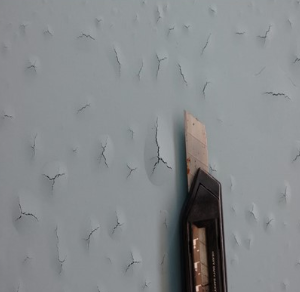
I provide, technical articles, civil engineering standard, construction standards, testing methods, FAQ, MCQ, new idea, Questions, complaint handling, general notes, Drawings, helping tips, open discussion, decision making idea, where is wrong, what is right, high rise building, tile and adhesive, grouts, concrete repair mortar, epoxy flooring, Polyurethane floorings and many other construction chemical related answers. Helping students, job interview questions, site works, application video.
Main Menu
Total Viewers
Translate
Search This Blog
Thursday, March 21, 2019
OSMOSIS
Saturday, March 16, 2019
IS 15477 : 2019 – Tile adhesive testing standard
Adhesives have been classified into five types namely, Type 1, Type 2,
Type 3, Type 4 and Type 5 based on Tensile adhesion strength and Shear adhesion
strength and of course in consideration of type of tile/stone to be installed
along with the substrate nature and situation.
Type 1 Adhesive: This adhesive is suitable mainly for tiles with apparent porosity greater than 3 percent. It is suitable for most of the clay and ceramic (non-vitrified) tiles of small dimension (size not more than 300 mm x 300 mm) and the majority of cement based backgrounds (substrates) like cement plaster, cement concrete, cement screed, etc, and for interior dry area applications only. Below values are in N/mm^2
Type 2 Adhesive: This adhesive is suitable mainly for tiles with an apparent porosity less than or equal to 3 percent. It is suitable for vitrified/fully vitrified tiles, glass mosaic tiles, all stones, dense and large dimension (More than 300 mm × 300 mm size) tiles and stones (slabs), and where background and location is more demanding like wet areas, submerged areas, etc. This type of adhesive is recommended for both interior floor and wall applications, and for exterior floor applications. Below values are in N/mm^2
Type 3 Adhesive: This adhesive is suitable mainly for tiles and stone tiles on exterior wall substrates like plaster or concrete. It is suitable for tiles like ceramic, clay tiles, basalt tiles, vitrified, glass mosaic tiles and porcelain tiles and all natural stone tiles. Below values are in N/mm^2
Type 4 Adhesive: This adhesive is suitable mainly for tiles and stone tiles which are included in Type 1, Type 2 and Type 3 (except metal tiles or engineered stones) but intended for installation on dry wall board substrates like gypsum boards, plywood, wood, calcium silicate boards, medium density fibre boards, fiber cement boards, cement boards, bison panel, etc. For all tiles/stones of size more than 600 mm × 600 mm, the adhesive shall also comply with ‘S1’ category of transverse deformation. For all tiles/stones of size more than 1200 mm × 1200 mm, the adhesive shall also comply with ‘S2’ category of transverse deformation.
These polymer modified adhesive can be achieved by the addition of a liquid admixture to the standard general purpose adhesive which is called as polymer fortified adhesive. Below values are in N/mm^2
Type 5 Adhesive: This adhesive is suitable for all types of tiles including engineered stones (manufactured stones) which are intended for installation on glass or metallic substrates like, grid iron, mild steel, stainless steel, aluminium or copper, etc. It is suitable for metal tiles, glass tiles, engineered stones or for all types of tiles and stones to be installed on different cement based substrates like cement screeds, plaster, concrete, drywall boards like gypsum boards, plywood, wood, metals composite boards, modified backer boards and the metallic substrates. Below values are in N/mm^2
These adhesive is generally a mixture of synthetic resin, mineral
fillers and organic additives in which hardening occurs by chemical reaction.
They are available in one or more component forms and in essence, these cover
polyurethane adhesive, epoxy adhesives, Furane based adhesive, etc.
Along with this, some other test has to be performed and declared accordingly. Like:
a.
Annex C, the open time shall not be less than
that stated by the manufacturer.
b. Annex
D, the adjustment time shall not be less than that stated by the manufacturer.
c. Annex
E, the slip shall not be more than 0.5 mm. Slip resistant adhesives shall be designated as ‘T’.
d. Annex
F, the deformability shall be within the range mentioned below for a particular
class as stated by the manufacturer:
I.
Deformable adhesive, S1 : > 2.5 mm, <5.0
mm
II.
Highly deformable adhesive, S2 : >5.0mm
Thanks for visiting blog.
TA - 1T
SS - 1T
GS - 2T - C1T
DS(G/W) - 3T - C2TS1
PSW - 4T - C2TES1
Afs1 (G/W) - 4TS1 - C2TES1
Afs2 - 4TS2 - C2TES2
EG - IS 4832
FR - IS 4832
Flex - __ - C2ES2
WA91 -







